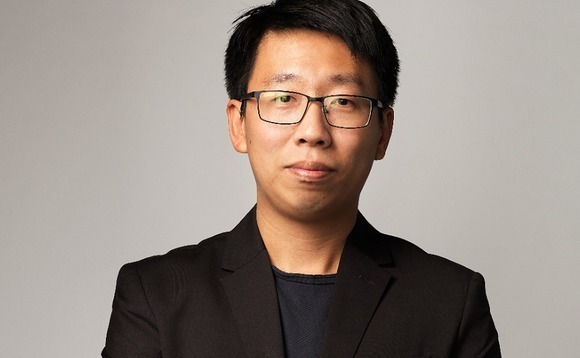
Q&A: Airwallex's Jack Zhang

Hong Kong-headquartered Airwallex has grown from nothing to a $2.6 billion valuation in the space of six years. Co-founder and CEO Jack Zhang details his plans to build a global financial technology stack
Q: How did you identify the pain point that Airwallex addresses?
A: We started the business because I was doing another start-up, a coffee shop chain. We were importing from China and Southeast Asia, using Western Union, and it was extremely manual, inefficient, and costly. We decided to solve this problem instead. My background is in finance and technology – I used to work in trading for investment banks – so I was interested in solving complicated issues in financial services. We decided to build a foreign exchange engine that trades directly on the interbank market, giving transparency to customers while managing the risk electronically. On the payments side, we built the infrastructure ourselves. In every market we operate, we get regulated and use domestic infrastructure to disburse payments. There is no human intervention in the process because we use our own technology.
Q: At what point were you confident the business would achieve critical mass?
A: We founded the company in 2015 and spent the first four years building out the infrastructure without a single dollar of revenue. The product launched in January 2018, and then we had a backlog of large customers, so it took time to onboard them. By the end of the first year of operations, we had multi-billions of dollars in TPV [total payment volume].
Q: How difficult was it to raise funding?
A: It was relatively straightforward. When we spoke to technology companies about investing – these are $500 billion-plus tech companies, some of the largest in the world – they just said, ‘Why can't we build this ourselves?' But we had assembled a good founding team and the problem we were trying to solve was significant from an infrastructure standpoint. We thought we could become a $100 billion-plus company and a lot of investors believed in this vision and in the team's ability to action it. We raised close to $100 million with very little revenue. That is one of the most fundamental things we achieved early on – with a bit of luck and a bit of vision.
Q: What or who are you disrupting in traditional financial services?
A: Banks make most of their money from lending and they have huge legacy customer bases. They need to innovate, and they can do that by partnering with us to offer better technology to those customers. As a global company, we don't compete with domestic banks, we empower them. We could compete with some of the global banks, but how many banks are truly global? Fintech is helping Visa and Mastercard by bringing more volume to their schemes, issuing more cards, so there is no competition. Some fintechs achieve a certain scope, like Ant Group, and build a closed-loop system. This means they compete directly with Visa and Mastercard, but it's not going to happen in the next 5-10 years.
Q: How has the business evolved in the past six years?
A: We have expanded our network beyond payments to financial cloud. We offer bank accounts, virtual cards, and physical cards. We do expense management through accounting software, and we enable customers to generate links to invoice customers and get paid instantly through Visa, Mastercard, WeChat or Alipay, or American Express. We offer rewards programs, and we facilitate domestic and international transfers. We move money in the most efficient way, managing currency risk with natural hedging and real-time management. Next year, we will start doing credit.
Q: What is the long-term strategic objective?
A: We want to become a single platform to empower modern businesses – financial technology stack. Google Cloud and AWS [Amazon Web Services] are the service cloud for technology infrastructure; Airwallex is the financial infrastructure. Essentially, we are a technology company, not a financial services company, although we do financial services. Everything is embedded into the business and operational workflow. To be one of the winners globally, we need breadth and depth. You aren't going to use AWS for databases and Google Cloud for websites. Everyone will use a single platform.
Q: How far advanced are you in that journey?
A: We are going to become an open platform that allows third-party software providers to build on top of our infrastructure – to become part of this modern tech stack. We are building the technology layer, the infrastructure layer, the software layer, and then the ecosystem layer. We expect to have global financial infrastructure phase one completed by the end of the year. From an infrastructure point of view, we are pretty much there. We have a network connecting to all forms of digital payment – bank accounts, wallets, cards. The next stage is building the software and ecosystem. We are still in the early days of that journey.
Q: To what extent is there a trade-off between product and geographical expansion?
A: We have limited engineer and product resources, so we must prioritize certain things, depending on the importance to the customer, to our revenue, to the technology, and to scalability. There are multiple trade-offs, it's not just about revenue.
Q: Is regulation the biggest issue when entering new markets?
A: Local regulation is never the biggest challenge. It's the people, the culture, and the team. That's always the number one thing we focus on. And then the product we offer in a market. We localize the product-market fit. This means integrating with local bank verification systems and supporting local payment methods.
Q: Given Square's recent acquisition of Afterpay, what are your expectations for industry M&A?
A: The ecosystem is going through a phase of consolidation. I think there will be a dozen $100 billion-plus fintechs that consolidate the market globally. For the global financial cloud, there will be two or three major players. Today, there is Citibank and J.P. Morgan, while the likes of Standard Chartered and Barclays are a bit smaller. Over the next 10 years, all that will change.
Q: You and your co-founders recently established a venture capital fund. What will it do?
A: The number one objective is to generate financial returns for investors. Airwallex is one of the LPs, but it only put in 5%. The founders account for another 5-10%. Other LPs include some of the world's largest technology companies. We want to invest in the generation of companies coming out of the Airwallex ecosystem. We see a lot of tier-one entrepreneurs growing their business globally and we want to help them continue that journey. It could be creditor services, marketing automation, or payroll companies that make remote working more efficient. The goal is to empower the ecosystem and customer growth, not just benefit Airwallex.
Latest News
Asian GPs slow implementation of ESG policies - survey
Asia-based private equity firms are assigning more dedicated resources to environment, social, and governance (ESG) programmes, but policy changes have slowed in the past 12 months, in part due to concerns raised internally and by LPs, according to a...
Singapore fintech start-up LXA gets $10m seed round
New Enterprise Associates (NEA) has led a USD 10m seed round for Singapore’s LXA, a financial technology start-up launched by a former Asia senior executive at The Blackstone Group.
India's InCred announces $60m round, claims unicorn status
Indian non-bank lender InCred Financial Services said it has received INR 5bn (USD 60m) at a valuation of at least USD 1bn from unnamed investors including “a global private equity fund.”
Insight leads $50m round for Australia's Roller
Insight Partners has led a USD 50m round for Australia’s Roller, a venue management software provider specializing in family fun parks.







